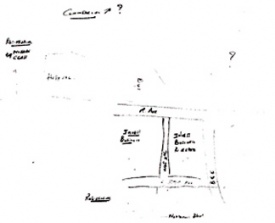Conflict and cooperationFrom The Peopling of New York CityThe presence of diverse ethnic groups in Jackson Heights has created both conflict and cooperation. Indeed, the struggle over space -- who should control it, inhabit it, and use it -- is a central concern to all of the residents and store owners in the neighborhood. The development of commercial strips, such as Little Colombia and Little India, has sparked much consternation in the minds of residents, who often blame retailers for the noise, pollution, and congestion that is characteristic of the busy commercial districts. They also hold the 'newcomers' responsible for the closing of many mom-and-pop stores in the area. It is important to point out that many of the merchants that conduct business in Little India do not reside in the neighborhood. For example, Sanjeev Varma, co-owner of Kunal Jewelers in Little India, lives in Long Island. As a result, some residents surmise that the merchants are uncommitted to the welfare of the community. The disagreements between the various neighborhood factions (of residents and merchants) often unfolds at the intersection of 73rd Street and 37th Avenue, where the retail stores and Historic District residences come into direct contact with one another. In 1995, after the creation of the Historic District, some unidentified residents formed Action Jackson. They had designated themselves as supervisors of the Historic District ensuring store owners followed guidelines and zoning laws. Action Jackson distributed fliers with a list of non-compliant stores in the community stating: "DON'T SHOP IN THE STORES LISTED BELOW! THESE STORES ARE ILLEGAL!!! DON'T GIVE YOUR MONEY TO STORES THAT BRING THE QUALITY OF OUR COMMUNITY DOWN! DON'T SHOP IN STORES THAT DEGRADE YOUR NEIGHBORHOOD." Much of the merchants' limited political power stems from their membership in the Merchants' Association. The Jackson Heights' Merchants' Association at first resisted calls to conform to the Landmarks Preservation guidelines. However, an article in the New York Times noted that recently, "the storefronts on several blocks skirting the Historic District voluntarily adhere to the district’s aesthetic standards, using awnings of only one color on a block" (Beyer). The Merchants' Association also initiated a movement to rename 74th Street "Little India." The movement met much resistance from residents. One resident said: "I don’t think that we should cut up the neighborhood. I think we should be one happy family. I personally wouldn’t want to have one area ‘Little India’ or ‘Little Colombia’ or ‘Little Mexico’. Years ago, I’m Italian, we didn’t say ‘Oh you’re going to the Jewish neighborhood,' or 'you’re going to the Italian neighborhood,' or ‘you’re going to the Irish bar.' We were one group. We never split it up years ago." This commentary is certainly atypical considering that various agents have actively sought to exclude certain groups since the neighborhood's creation. The tensions between various factions are also demonstrated in the common perceptions of the neighborhood's residents. For example, a non-resident police officer whom we interviewed identified Roosevelt Ave and Junction Blvd as the areas where the most crime is committed. He said, "You can feel the difference as you walk up the blocks." Former resident Dr. Baboo Punnan's cognitive map reflects similar tensions. He drew question marks in certain areas. He said that since Latinos had moved into those areas, he had become unfamiliar with the terrain. He was uncertain as to the general atmosphere of the neighborhood and implied the area's deterioration. The segregation of certain communities in the consciousness of residents reflects the friction between various groups in the neighborhood. Often, Jackson Heights has been subject to racial gerrymandering. For example, in 1991, it was alleged that despite earlier agreements, actors in the City Council specifically drew the boundaries of Council District 21 to benefit the African-American candidate Helen Marshall. Had this not occurred, Hispanics would have comprised a majority of the District's constituents. To this precariously balanced coexistence, the discussion of gentrification adds new dimensions.
|

